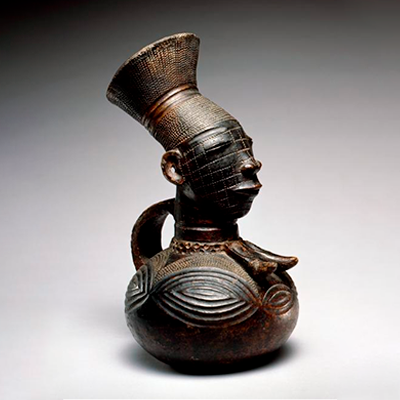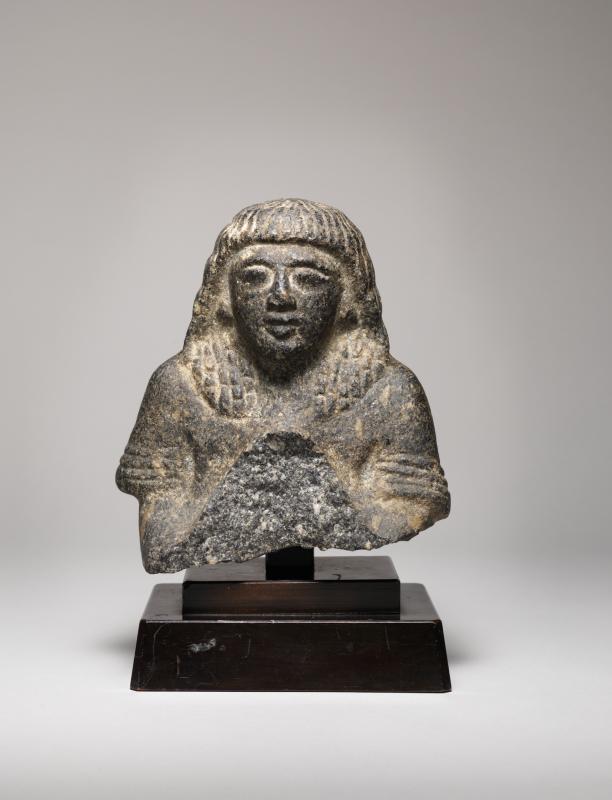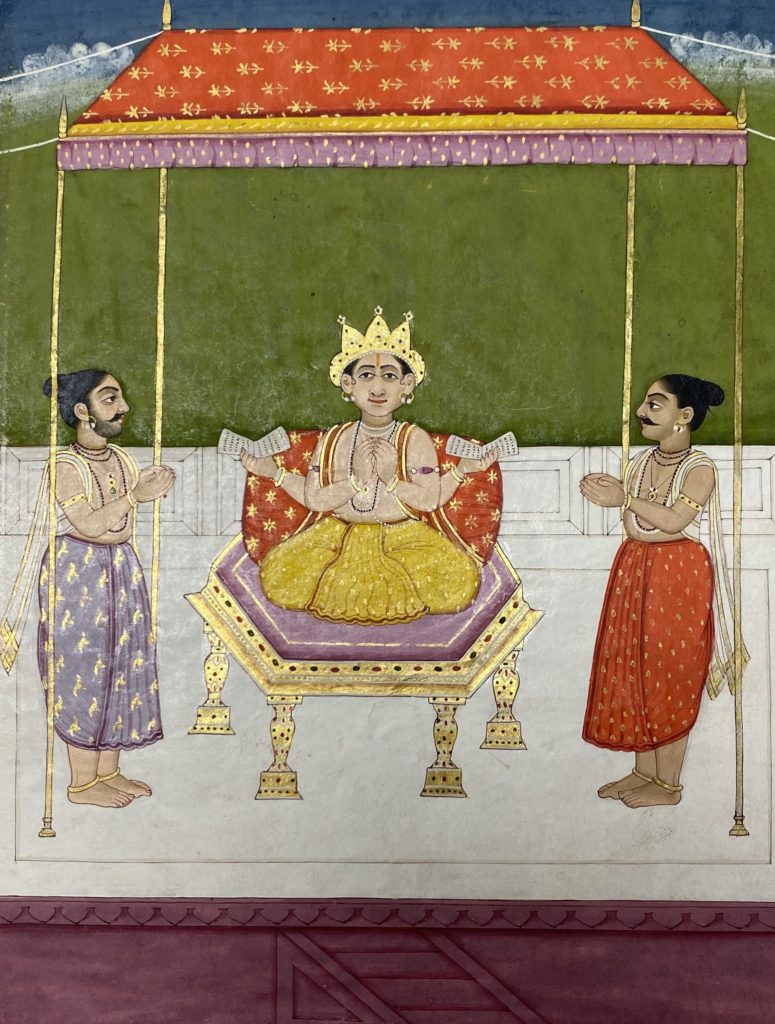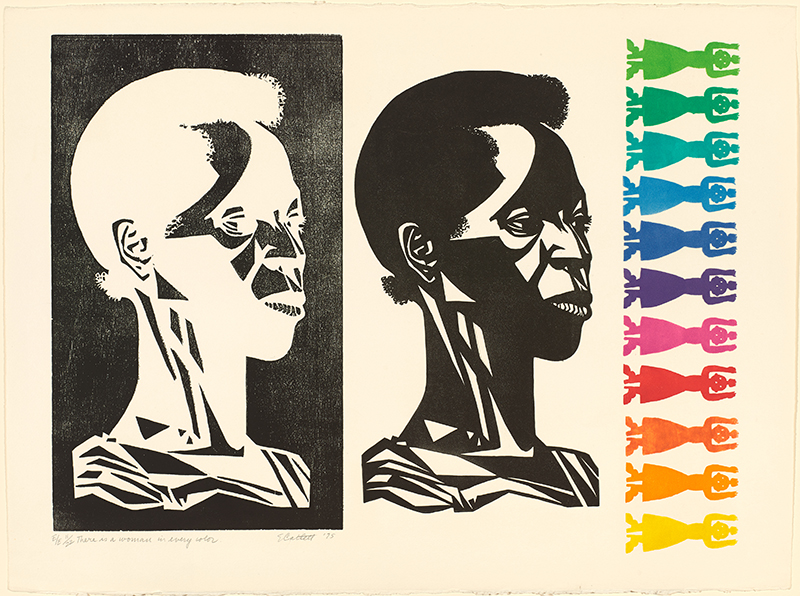
The works here and in the case nearby, selected from the six permanent collections of Emory’s Michael C. Carlos Museum, demonstrate the ways in which different cultures use figurative representation to conceptualize and complicate questions of identity and belonging.
Anthropomorphic Vessel

Anthropomorphic Vessel
Democratic Republic of the Congo
Mangbetu
1912-1930s
Ceramic
Gift of William S. Arnett
1994.3.19
© Bruce M. White, 2006
The Mangbetu vessel depicts adornment favored by elite women at the turn of the twentieth century in the Democratic Republic of Congo. Elongated foreheads, hair woven in a basket-like arrangements, and body tattooing indicated female status and beauty.
Head of a Veiled Woman

Michael C. Carlos Museum
Head of a veiled woman, perhaps a goddess
Greece, possibly Athens
Roman
Imperial, Hadrianic, ca. 130 CE
Marble (Pentelikon)
Carlos Collection of Ancient Art
1994.2
© Bruce M. White, 2006
The symmetrical features, ordered hair, and calm demeanor of the veiled female head – once part of a public monument constructed on the Athenian Acropolis during the reign of the Roman emperor Hadrian (r. 117-138 CE) – likewise connote ideal femininity but also establish a visual language of political and cultural authority, deploying the representational style characteristic of fifth-century BCE Greek art to suggest continuity between Hadrian’s Rome and Athens’s perceived golden age.
Female Figure with Elaborate Headdress

Female figure with elaborate headdress
Ecuador
Jama-Coaque
300 BCE – 800 CE
Ceramic
Gift of William C. and Carol W. Thibadeau
1990.11.53
© Bruce M. White, 2015
Similarly, the standing Jama-Coaque female effigy from Ecuador represents a high-status woman in a yellow turban, black skirt, and gold jewelry. The clay slabs on either side of her head symbolize draped cloth, and her arms show the imprint of stamped, tattooed, or scarification patterns.
Upper Part of a Naophorus Statue

Upper part of a naophorus statue
Egyptian
New Kingdom, Dynasties 19-20, 1292-1077 BCE
Black granite Gift of Sally and Joe Gladden in honor of Joop Bollen, 2014 Woolford B. Baker Service Award Recipient
2014.20.1
© Bruce M. White, 2014
Naophorus statues, often found in ancient Egyptian temples, depict men or women offering a naos-shrine to the gods to demonstrate their piety. The hieroglyphic inscription invokes queen Ahmose Nefertari, a powerful New Kingdom queen whose cult was popular among artisans in ancient Thebes.
Avatars of Vishnu: The Buddha as Vishnu

The Buddha as Vishnu
North India, Punjab Hills
19th Century
Opaque watercolor and gold on paper
Courtesy of Harshna and Pyush Patel
L2020.11.5
Indian religious traditions have historically interacted and influenced each other—ritually, mythologically, visually, and socially. This 19th-century watercolor painting represents the Buddha, not in the robes of a renunciant, but as the ninth avatar of Vishnu, wearing the yellow garment often associated with the avatars.
There is a Woman in Every Color

Elizabeth Catlett (American, 1915-2012)
There is a Woman in Every Color 1975-2004
Woodcut, screen print, color linocut
Gift of Barbara and Larry Schulz in memory
of their son, Daniel Schulz
2022.9.3
© Estate of Elizabeth Catlett/Artists Right Society (ARS), New York
Elizabeth Catlett’s work often explores questions of identity, particularly through the lens of the African American female experience. Catlett combined woodcut, screenprint, and color linoleum cut to create this image; the multiplicity of techniques, the rendering of the woman’s face in both negative and positive, along with the colorful line of women evoke the inclusive nature of Catlett’s activism and her call for gender and racial equality.
